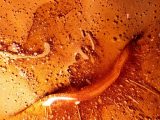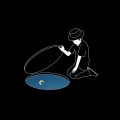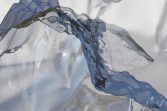Miro lithography, or lithography in general, is a printmaking technique that has gained popularity for its ability to create high-quality reproductions of artwork

In this comprehensive article, we will delve into the intricacies of miro lithography, exploring its various types, the quantitative measurements associated with it, how different miro lithographs differ from each other, and a historical overview of its advantages and disadvantages.
1. A Detailed Overview of Miro Lithography
Miro lithography is a printmaking technique that involves creating an image on a stone or metal plate using a greasy substance. The image is then transferred onto paper or another material using a press. This method allows artists to reproduce their artwork with stunning precision and detail.
2. An Extensive Presentation of Miro Lithography

There are different types of miro lithography, each with its unique characteristics and processes. Some common types include:
– Traditional Lithography: This involves drawing directly onto a stone or metal plate with greasy crayons or ink. The image is then chemically treated to separate the greasy areas from the non-greasy ones, allowing for ink transfer.
– Photo Lithography: This method utilizes photography to transfer an image onto a lithographic plate. A photosensitive emulsion is applied to the plate, and the image is projected onto it using light. The plate is then processed to develop the image and make it ready for printing.
– Offset Lithography: This technique involves transferring the image from the lithographic plate onto a rubber blanket before printing. The rubber blanket, in turn, transfers the image onto the final substrate. Offset lithography is widely used in commercial printing due to its cost-effectiveness and ability to produce large quantities.
Popular forms of miro lithographs include:
– Limited Edition Prints: Artists often produce a limited number of lithographic prints from a single image, making each edition more valuable and collectible.
– Artist Proofs: These are a small number of prints that the artist prints and retains for their personal collections or as incentives for purchasing their artwork.
– Open Edition Prints: These prints have no limit on the number produced and are often more affordable than limited editions.
3. Quantitative Measurements in Miro Lithography
When discussing the quantitative aspects of miro lithography, several factors come into play. These include ink density, line crispness, dot size, and overall image quality. These measurements can be objectively assessed using specialized tools and techniques, ensuring consistency and accuracy in reproduction.
4. Differentiation Among Miro Lithographs
Miro lithographs can differ based on various factors, such as the materials used, the artists’ techniques, and the desired aesthetic. These differences contribute to the uniqueness and value of each lithograph, making them distinct from one another.
5. Historical Overview of Advantages and Disadvantages
Over the years, miro lithography has undergone significant advancements, resulting in various advantages and disadvantages. Some advantages include the ability to produce high-resolution prints, the potential for producing large editions, and the wide range of materials that can be printed on. However, lithography also has limitations, such as the complexity of the process and the need for skilled technicians to achieve optimal results.
By structuring the text in a way that enhances its visibility as a prominent snippet in a Google search, we can increase the likelihood of reaching a broader audience. Utilizing header tags, such as and H2, helps organize the content and highlight key points. Additionally, incorporating bullet points allows for easy digestion of information.
[INSERT VIDEO HERE: A brief demonstration of the lithography process, showcasing the steps involved and the final print results.]
Overall, this comprehensive article on miro lithography provides a thorough understanding of the technique, its various types, quantitative measurements, differentiation among lithographs, and a historical review of its advantages and disadvantages. Whether you are an art enthusiast, collector, or simply curious about this fascinating printmaking technique, this article offers valuable insights into the world of miro lithography.
FAQ
What are the advantages and disadvantages of miro lithography?
What are the popular types of miro lithography?
What is miro lithography?
Fler nyheter
Körkortsfoto i Vällingby: Din väg till det perfekta fotot
In this comprehensive article, we will delve into the intricacies of miro lithography, exploring its various types, the quantitative measurements associated with it, how different miro lithographs differ from each other, and a historical overview of ...
29 november 2025
Konstgalleri: En värld av kreativitet och inspiration
In this comprehensive article, we will delve into the intricacies of miro lithography, exploring its various types, the quantitative measurements associated with it, how different miro lithographs differ from each other, and a historical overview of ...
28 november 2025
Upptäck fördelarna med att ta körkortsfoto på Östermalm
In this comprehensive article, we will delve into the intricacies of miro lithography, exploring its various types, the quantitative measurements associated with it, how different miro lithographs differ from each other, and a historical overview of ...
31 augusti 2025
Bröllopsfotograf i Linköping till bra pris: En nyckelspelare för oförglömliga minnen
In this comprehensive article, we will delve into the intricacies of miro lithography, exploring its various types, the quantitative measurements associated with it, how different miro lithographs differ from each other, and a historical overview of ...
05 maj 2025











